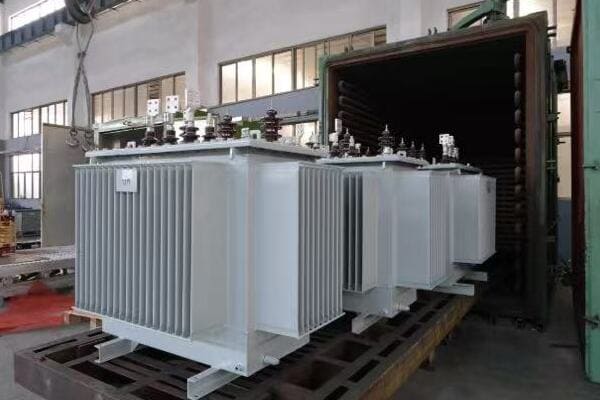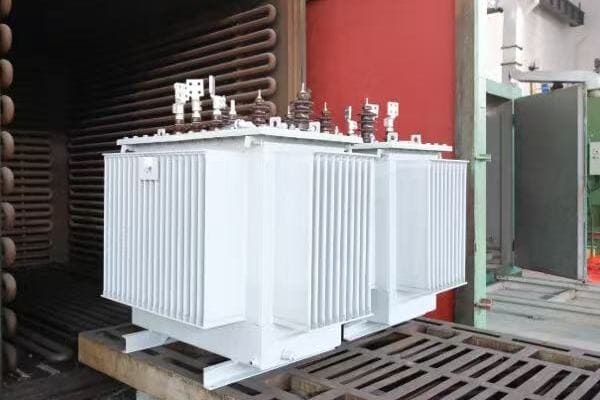Distribution Transformer Diagrams Explained: Step-by-Step Guide for Technicians
Are you struggling to make sense of complex distribution transformer diagrams? You’re not alone. Many technicians find these schematics confusing, leading to costly mistakes and safety risks. But what if you could confidently interpret these diagrams, improving your efficiency and reducing errors on the job?
Distribution transformer diagrams show how electricity flows through transformer components like windings, terminals, and grounding points. Technicians use these diagrams to install, inspect, or troubleshoot transformers. This step-by-step guide explains key symbols and layout rules to help you interpret wiring and schematic diagrams with confidence.

In this comprehensive guide, I’ll walk you through the process of reading distribution transformer diagrams, from understanding basic symbols to interpreting complex schematics. Whether you’re a novice technician or an experienced professional looking to refine your skills, this article will provide you with the knowledge to tackle transformer diagrams with confidence.
What Is a Distribution Transformer Diagram?
Have you ever wondered why distribution transformer diagrams look so complex? These intricate drawings serve a crucial purpose, but their complexity can be overwhelming. So, what exactly are these diagrams, and why are they so important for technicians?
A distribution transformer diagram is a technical drawing that illustrates the internal connections, components, and electrical pathways of a transformer. It includes wiring schematics, connection points, and component layouts. These diagrams are essential for installation, maintenance, and troubleshooting, providing technicians with a detailed map of the transformer’s electrical system.

Understanding Different Types of Transformer Diagrams
Let’s explore the main types of diagrams you’ll encounter:
- Single-Line Diagrams
- Wiring Schematics
- Connection Diagrams
- Nameplate Information
Single-Line Diagrams
Single-line diagrams provide a simplified overview of the transformer’s electrical system:
- Show main power flow paths
- Use simplified symbols for components
- Ideal for quick system understanding
I once used a single-line diagram to quickly diagnose a power distribution issue in a large industrial complex. The simplicity of the diagram allowed me to trace the problem to a specific transformer in minutes, saving hours of troubleshooting time.
Wiring Schematics
Wiring schematics offer detailed representations of electrical connections:
- Show all electrical components and connections
- Include control circuits and protection devices
- Essential for detailed troubleshooting and repairs
During a recent transformer upgrade project, the wiring schematic was crucial in identifying an incorrectly wired control circuit that could have caused significant operational issues if left undetected.
Connection Diagrams
Connection diagrams focus on the physical layout of components:
- Illustrate physical arrangement of terminals and bushings
- Show how external connections should be made
- Vital for proper installation and maintenance
I recall a situation where a misinterpreted connection diagram led to an incorrectly installed transformer. By carefully reviewing the diagram with the installation team, we were able to correct the error before energizing the system, potentially preventing a dangerous situation.
Nameplate Information
While not a diagram per se, the nameplate provides critical information:
- Includes voltage ratings, capacity, impedance, and vector group
- Often contains a simplified connection diagram
- Essential for verifying transformer specifications
Here’s a quick reference table for the types of information found on transformer diagrams:
| Diagram Type | Key Information | Primary Use |
|---|---|---|
| Single-Line | Overall system layout | System planning |
| Wiring Schematic | Detailed electrical connections | Troubleshooting |
| Connection Diagram | Physical component layout | Installation |
| Nameplate | Specifications and ratings | Verification |
Understanding these different types of diagrams is crucial for effective transformer management. Each serves a specific purpose and provides unique insights into the transformer’s design and operation.
In my experience, the ability to quickly identify and interpret the correct type of diagram for a given task is a hallmark of an efficient technician. I’ve seen many situations where referring to the wrong type of diagram led to confusion and errors. For instance, trying to use a single-line diagram for detailed wiring troubleshooting can be frustrating and ineffective.
As we delve deeper into the specifics of reading these diagrams, remember that each type has its place in your toolkit. Knowing when and how to use each type of diagram will significantly enhance your ability to work with distribution transformers effectively and safely.
Understanding Transformer Symbols and Labels
Are you finding yourself puzzled by the array of symbols and labels on transformer schematics? You’re not alone. Many technicians struggle to decipher these critical elements. But what if you had a clear guide to help you understand each symbol and its significance?
Transformer schematics use standardized symbols to represent components like windings, bushings, and taps. Key labels include voltage ratings, winding connections (e.g., Delta or Wye), and terminal markings. Understanding these symbols and labels is crucial for correctly interpreting the transformer’s configuration and connections, ensuring proper installation and maintenance.

Essential Symbols and Labels in Transformer Diagrams
Let’s break down the most important symbols and labels you’ll encounter:
- Winding Representations
- Bushing and Terminal Symbols
- Connection Type Indicators
- Tap Changer Symbols
- Protective Device Symbols
Winding Representations
Windings are the heart of a transformer and are represented in specific ways:
- Primary windings: Often shown as thicker lines or on the left side
- Secondary windings: Usually thinner lines or on the right side
- Tertiary windings: If present, often shown in the middle or bottom
I once worked on a project where misinterpreting the winding representation led to an incorrect voltage tap selection. Always double-check these symbols to ensure proper connections.
Bushing and Terminal Symbols
Bushings and terminals are crucial connection points:
- High voltage bushings: Often labeled H1, H2, H3
- Low voltage bushings: Typically labeled X1, X2, X3
- Neutral points: Usually marked with N or a ground symbol
During a recent installation, I noticed a technician confusing the H and X labels. This could have led to a dangerous high-voltage connection error if not caught in time.
Connection Type Indicators
These symbols show how the windings are internally connected:
- Delta (Δ): Triangular symbol
- Wye (Y): Star-like symbol with a central point
- Zig-zag: Represented by a ‘Z’ shape
Understanding these connections is crucial. I recall a troubleshooting case where the incorrect assumption of a Delta connection in a Wye-connected transformer led to prolonged downtime.
Tap Changer Symbols
Tap changers allow for voltage adjustment:
- No-Load Tap Changer (NLTC): Often shown as a switch with multiple positions
- On-Load Tap Changer (OLTC): Represented with more complex switching arrangements
Proper interpretation of tap changer symbols is vital for voltage regulation. In a recent project, misunderstanding these symbols resulted in incorrect tap settings, causing voltage stability issues.
Protective Device Symbols
Various protective devices are represented in transformer diagrams:
- Circuit breakers: Typically shown as a switch with a zigzag line
- Fuses: Often represented by a thin rectangle or a zigzag line in a circle
- Surge arresters: Usually depicted as a zigzag line with a ground connection
Here’s a quick reference table for common transformer symbols:
| Symbol | Meaning | Importance |
|---|---|---|
| ⚡ | High Voltage | Indicates primary side |
| 🔌 | Low Voltage | Indicates secondary side |
| Δ | Delta Connection | Affects phase relationships |
| Y | Wye Connection | Provides a neutral point |
| ↯ | Surge Arrester | Critical for overvoltage protection |
| ⭘ | Bushing | Key connection point |
Understanding these symbols is not just about reading diagrams; it’s about ensuring safety and efficiency in transformer operations. I’ve seen cases where misinterpretation of protective device symbols led to inadequate protection setups, risking equipment damage.
When working with transformer schematics, always refer to the legend or key provided with the diagram. Different manufacturers or standards may have slight variations in symbol representation. If you’re ever unsure about a symbol, don’t hesitate to consult the manufacturer’s documentation or ask a more experienced colleague.
Remember, proficiency in reading these symbols comes with practice. I encourage technicians to spend time studying various transformer diagrams, even when not actively working on a project. This familiarity can be invaluable when you’re faced with a complex diagram in the field.
As we move forward, we’ll explore how these symbols come together in a complete diagram and how to interpret them in context. Understanding these individual elements is your first step towards mastering transformer schematic interpretation.
Step-by-Step Guide to Reading Transformer Diagrams
Are you feeling overwhelmed when faced with a complex transformer diagram? Many technicians struggle to know where to start and how to systematically analyze these schematics. But what if you had a clear, step-by-step approach to break down even the most intricate diagrams?
To read a transformer diagram, start by identifying the voltage levels and winding arrangements. Then, trace the connections from primary to secondary, noting any taps or protective devices. Pay attention to the connection type (Delta or Wye) and bushing labels. Finally, check for any special features like tertiary windings or on-load tap changers. This systematic approach ensures comprehensive understanding.

Systematic Approach to Reading Transformer Diagrams
Let’s break down the process into manageable steps:
- Identify Voltage Levels and Ratings
- Analyze Winding Arrangements
- Trace Connections and Paths
- Understand Connection Types
- Locate Protective Devices
- Check for Special Features
Step 1: Identify Voltage Levels and Ratings
Start by locating and understanding the voltage ratings:
- Look for primary (high voltage) and secondary (low voltage) ratings
- Note any intermediate voltage levels for multi-winding transformers
- Check the kVA or MVA rating to understand the transformer’s capacity
I once encountered a situation where overlooking the voltage rating led to an incorrect transformer selection for a project. Always verify these fundamental specifications first.
Step 2: Analyze Winding Arrangements
Examine how the windings are represented:
- Identify primary, secondary, and any tertiary windings
- Note the relative positions of windings (e.g., core type vs. shell type)
- Look for any split windings or auto-transformer configurations
Understanding winding arrangements is crucial. In a recent troubleshooting case, recognizing a split winding configuration helped us quickly isolate a fault that was causing mysterious voltage imbalances.
Step 3: Trace Connections and Paths
Follow the electrical paths through the transformer:
- Start from the primary bushings and trace to the secondary
- Note any interconnections between windings
- Identify neutral points and grounding connections
Tracing connections methodically can reveal insights about the transformer’s operation. I recall a project where carefully following the connection path uncovered an unnecessary neutral grounding point that was causing circulating currents.
Step 4: Understand Connection Types
Determine how the windings are connected:
- Look for Delta (Δ) or Wye (Y) symbols
- Note any zig-zag connections
- Understand the implications of these connections on phase relationships and harmonics
Misinterpreting connection types can lead to serious issues. I once witnessed a technician assuming a Wye connection in a Delta-connected transformer, resulting in incorrect voltage measurements and confusion during commissioning.
Step 5: Locate Protective Devices
Identify and understand the protective elements:
- Find symbols for circuit breakers, fuses, and surge arresters
- Note the location of these devices in relation to the windings
- Understand their role in protecting the transformer
Proper identification of protective devices is critical for safety. In a recent maintenance project, overlooking a surge arrester symbol led to its omission during a routine check, potentially leaving the transformer vulnerable to overvoltage events.
Step 6: Check for Special Features
Look for any additional features or components:
- Identify tap changers (NLTC or OLTC) and their range
- Note any cooling system indicators (ONAN, ONAF, etc.)
- Look for auxiliary components like temperature sensors or pressure relief devices
Special features can significantly affect transformer operation. I remember a case where failing to notice an on-load tap changer symbol led to confusion about voltage fluctuations that were actually normal tap change operations.
Here’s a quick checklist to guide your diagram interpretation:
- [ ] Voltage and capacity ratings identified
- [ ] Winding arrangements understood
- [ ] All connections traced and verified
- [ ] Connection types (Delta/Wye) confirmed
- [ ] Protective devices located and understood
- [ ] Special features and auxiliaries noted
By following these steps systematically, you can break down even the most complex transformer diagrams into manageable parts. Remember, practice makes perfect. I encourage technicians to apply this step-by-step approach to various diagrams, even those outside their immediate projects, to build proficiency.
As you gain experience, you’ll find that this systematic approach becomes second nature, allowing you to quickly grasp the key aspects of any transformer configuration. This skill is invaluable for efficient troubleshooting, maintenance planning, and ensuring safe operations in the field.
Common Misinterpretations and How to Avoid Them?
Have you ever made a mistake in reading a transformer diagram that led to confusion or, worse, a safety hazard? You’re not alone. Even experienced technicians can fall prey to common misinterpretations. But what if you could learn from these mistakes and avoid them in your own work?
Common misinterpretations in transformer diagrams include confusing Delta and Wye connections, misidentifying neutral points, and overlooking tap changer positions. To avoid these errors, always double-check connection symbols, verify neutral and ground connections explicitly, and pay close attention to tap changer notations. Systematic diagram review and cross-referencing with nameplate data can significantly reduce interpretation errors.
Key Misinterpretations and Prevention Strategies
Let’s explore common mistakes and how to avoid them:
- Confusing Delta and Wye Connections
- Misidentifying Neutral Points
- Overlooking Tap Changer Positions
- Misinterpreting Bushing Labels
- Neglecting Polarity Markings
1. Confusing Delta and Wye Connections
Mistake: Assuming a Wye connection when it’s actually Delta, or vice versa.
Prevention:
- Always look for the explicit Delta (Δ) or Wye (Y) symbols
- Check for the presence or absence of a neutral point
- Verify the number of bushing connections (3 for Delta, 4 for Wye including neutral)
I once witnessed a technician mistakenly assuming a Delta connection in a Wye-connected transformer. This led to incorrect voltage measurements and confusion during troubleshooting. Always verify the connection type explicitly.
2. Misidentifying Neutral Points
Mistake: Confusing a grounded point for a true neutral or vice versa.
Prevention:
- Look for the specific neutral symbol (often an N or a ground symbol with a line)
- Verify if the neutral is brought out to a bushing or internally grounded
- Check the nameplate for information on neutral connections
During a recent project, a misidentified neutral point led to improper grounding, causing potential safety issues. Always double-check neutral and grounding connections against the diagram and nameplate data.
3. Overlooking Tap Changer Positions
Mistake: Failing to account for the current tap position when interpreting voltages.
Prevention:
- Always note the presence of tap changers (NLTC or OLTC)
- Check the current tap position against the diagram
- Remember that tap positions can affect both voltage and current ratings
I recall a troubleshooting case where voltage discrepancies were caused by an overlooked tap changer position. Integrating tap position checks into your diagram interpretation routine is crucial.
4. Misinterpreting Bushing Labels
Mistake: Confusing high voltage (H) and low voltage (X) bushing labels.
Prevention:
- Pay close attention to bushing label conventions (H1, H2, H3 for high voltage; X1, X2, X3 for low voltage)
- Cross-reference bushing labels with voltage ratings- Use the physical layout on the diagram to confirm bushing positions
A colleague once shared a story of a near-miss incident where H and X bushings were almost interchanged during installation due to misreading labels. Always double-check bushing labels against both the diagram and physical markings on the transformer.
5. Neglecting Polarity Markings
Mistake: Overlooking or misunderstanding polarity markings on windings.
Prevention:
- Look for dots or other polarity indicators on winding representations
- Understand that these markings are crucial for proper phasing in parallel operations
- Always consider polarity when dealing with multiple transformers or autotransformers
I once encountered a situation where neglected polarity markings led to a phase reversal when connecting transformers in parallel. This could have caused severe damage if not caught during commissioning tests.
Here’s a quick reference table for common misinterpretations and their prevention:
| Misinterpretation | Potential Consequence | Prevention Strategy |
|---|---|---|
| Delta/Wye Confusion | Incorrect voltage expectations | Always verify connection symbol |
| Neutral Misidentification | Improper grounding | Check for explicit neutral marking |
| Overlooked Tap Position | Unexpected voltage levels | Include tap check in routine |
| Bushing Label Mix-up | Dangerous voltage application | Cross-reference with ratings |
| Polarity Neglect | Phase reversal in parallel operation | Always note and consider polarity marks |
To further avoid misinterpretations, consider these best practices:
-
Use a Checklist:
Develop and use a standardized checklist for diagram interpretation. This helps ensure you don’t miss critical elements. -
Cross-Reference Multiple Sources:
Always compare the diagram with nameplate data and any accompanying documentation. -
Seek Clarification:
If in doubt, don’t hesitate to consult with colleagues or contact the manufacturer for clarification. -
Regular Training:
Participate in regular refresher training on diagram interpretation, especially when new standards or symbols are introduced. -
Learn from Mistakes:
Analyze and discuss misinterpretation incidents (your own and others’) as learning opportunities.
In my years of experience, I’ve found that most misinterpretations stem from assumptions and rushing through diagram analysis. I always encourage technicians to take their time, even if they feel familiar with a particular transformer type. A methodical approach can prevent costly and potentially dangerous errors.
Remember, interpreting transformer diagrams is a skill that improves with practice and attention to detail. By being aware of these common pitfalls and actively working to avoid them, you can significantly enhance your accuracy and reliability in working with transformer systems.
Practice Example: Real-World Diagram Interpretation
Are you ready to put your newfound knowledge to the test? Interpreting real-world transformer diagrams can be daunting, but with practice, it becomes second nature. Let’s walk through a practical example to solidify your understanding and boost your confidence in reading these crucial schematics.
This practice example demonstrates how to interpret a typical distribution transformer diagram. We’ll identify key components like windings, bushings, and tap changers, trace connections, and understand the transformer’s configuration. By following this step-by-step analysis, you’ll gain practical experience in applying diagram reading skills to real-world scenarios.

Step-by-Step Analysis of a Distribution Transformer Diagram
Let’s break down our sample diagram:
- Identify Basic Information
- Analyze Winding Configuration
- Trace Connections and Bushings
- Examine Tap Changer Details
- Note Protective Devices
- Consider Special Features
Step 1: Identify Basic Information
First, let’s gather the fundamental details:
- Transformer Rating: 1000 kVA
- Primary Voltage: 11 kV
- Secondary Voltage: 400V/230V
- Frequency: 50 Hz
This information sets the context for our analysis. In real-world scenarios, I always start by verifying these basics against the project requirements to ensure we’re working with the correct transformer.
Step 2: Analyze Winding Configuration
Now, let’s look at how the windings are arranged:
- Primary Winding: Delta connected (note the triangle symbol)
- Secondary Winding: Wye connected (note the star symbol with neutral point)
This Dyn11 configuration is common in distribution transformers. I recall a project where understanding this configuration was crucial for properly setting up ground fault protection.
Step 3: Trace Connections and Bushings
Let’s identify and trace the connections:
- Primary Bushings: Labeled as H1, H2, H3
- Secondary Bushings: Labeled as X1, X2, X3, X0 (neutral)
- Note how the delta primary connects between H1-H2, H2-H3, and H3-H1
- Observe the wye secondary with X0 as the neutral point
During a recent installation, carefully tracing these connections helped us identify a manufacturing error where H2 and H3 were swapped. Always verify these connections against the physical transformer.
Step 4: Examine Tap Changer Details
Our diagram shows a tap changer:
- Located on the primary (high voltage) side
- 5 positions: -5%, -2.5%, 0, +2.5%, +5%
- Current position indicator
Understanding tap changer details is crucial. I once troubleshot a voltage issue that was simply due to an incorrectly set tap position.
Step 5: Note Protective Devices
Identify the protective elements:
- Surge arresters on both primary and secondary sides
- Pressure relief valve on the tank
- Temperature indicator
In a recent maintenance project, noting these protective devices in the diagram helped us create a comprehensive checklist for inspection and testing.
Step 6: Consider Special Features
Look for any additional features:
- Oil level indicator
- Cooling type: ONAN (Oil Natural Air Natural)
- Grounding connections for the tank and neutral
Understanding these features is important for maintenance and operation. For instance, knowing the cooling type helps in assessing the transformer’s capacity to handle overloads.
Here’s a summary table of key components in our practice diagram:
| Component | Identification | Notes |
|---|---|---|
| Primary Winding | Delta | 11 kV |
| Secondary Winding | Wye | 400V/230V |
| Tap Changer | 5-position NLTC | On primary side |
| Bushings | H1-H3, X0-X3 | Standard labeling |
| Protective Devices | Surge arresters, PRV | On both HV and LV sides |
| Special Features | Oil level, ONAN cooling | Important for maintenance |
By systematically analyzing this diagram, we’ve covered all crucial aspects of the transformer’s configuration. This approach ensures that no important detail is overlooked.
In my experience, practicing with diverse diagrams is key to building proficiency. I encourage technicians to analyze diagrams from different manufacturers and for various applications. This broad exposure helps in developing a versatile skill set applicable across different scenarios.
Remember, while this example provides a good foundation, real-world diagrams may present unique challenges or additional complexities. Always be prepared to consult additional resources or seek expert advice when encountering unfamiliar elements.
As you continue to practice, you’ll find that your ability to quickly and accurately interpret these diagrams improves, making you a more effective and valuable technician in the field.
Top Tips for Mastering Transformer Diagram Interpretation
Are you looking to enhance your skills in reading transformer diagrams but feeling overwhelmed by the complexity? Many technicians struggle to develop this crucial skill efficiently. But what if you had a set of proven strategies to accelerate your learning and boost your confidence in interpreting these vital schematics?
To master transformer diagram reading, start by familiarizing yourself with standard symbols and conventions. Practice regularly with diverse diagrams, focusing on one component at a time. Use mnemonic devices to remember complex configurations, and always cross-reference diagrams with physical transformers when possible. Joining study groups or online forums can provide valuable insights and learning opportunities.

Essential Tips for Mastering Transformer Diagram Interpretation
Let’s explore key strategies to enhance your diagram reading skills:
- Build a Strong Foundation in Basics
- Practice Regularly with Diverse Diagrams
- Use Mnemonic Devices and Visual Aids
- Leverage Technology and Online Resources
- Engage in Collaborative Learning
- Apply Knowledge in Real-World Scenarios
1. Build a Strong Foundation in Basics
Start by mastering the fundamentals:
- Learn standard symbols for components (windings, bushings, taps)
- Understand basic electrical principles (voltage, current, phases)
- Familiarize yourself with common transformer configurations (Delta, Wye)
I always advise new technicians to create a personal reference guide of symbols and their meanings. This simple tool has proven invaluable in my own career, especially when dealing with less common configurations.
2. Practice Regularly with Diverse Diagrams
Consistent practice is key to improvement:
- Analyze diagrams from different manufacturers and for various applications
- Start with simple diagrams and progressively move to more complex ones
- Set aside dedicated time each week for diagram study
In my early career, I made it a habit to study at least one new diagram each day. This consistent practice dramatically improved my speed and accuracy in interpretation.
3. Use Mnemonic Devices and Visual Aids
Develop memory aids to recall complex information:
- Create acronyms for component sequences (e.g., PTOC: Primary, Tap, Oil, Core)
- Use color coding in your notes to differentiate between components
- Draw simplified versions of complex diagrams to understand core concepts
I found that creating my own visual representations of transformer layouts helped me internalize the relationships between components more effectively than rote memorization.
4. Leverage Technology and Online Resources
Utilize digital tools to enhance your learning:
- Use transformer simulation software to visualize operations
- Access online forums and discussion groups for expert insights
- Explore educational videos and interactive tutorials
Online resources have been a game-changer in my professional development. I regularly participate in webinars and online courses to stay updated on the latest diagram conventions and technologies.
5. Engage in Collaborative Learning
Learn from and with others:
- Form study groups with colleagues
- Participate in industry workshops and seminars
- Seek mentorship from experienced technicians
Some of my most valuable learning experiences came from collaborative problem-solving sessions with peers. Discussing different interpretations of complex diagrams often led to deeper understanding for everyone involved.
6. Apply Knowledge in Real-World Scenarios
Put your skills into practice:
- Volunteer for diverse projects to gain hands-on experience
- Compare diagrams to actual transformers whenever possible
- Practice troubleshooting using both diagrams and physical equipment
I always encourage technicians to take every opportunity to correlate diagram information with real transformers. This practical application cements theoretical knowledge and builds confidence.
Here’s a quick reference table for learning strategies:
| Strategy | Implementation | Benefit |
|---|---|---|
| Basic Mastery | Create personal symbol guide | Quick reference for interpretation |
| Regular Practice | Daily diagram analysis | Improved speed and accuracy |
| Mnemonics | Develop personal memory aids | Better recall of complex information |
| Technology Use | Engage with online resources | Access to latest information and tools |
| Collaboration | Participate in study groups | Diverse perspectives and shared knowledge |
| Practical Application | Correlate diagrams with real equipment | Enhanced understanding and confidence |
Additional tips for effective learning:
-
Keep a Diagram Journal:
Document your learning process, noting challenging aspects and breakthroughs. -
Teach Others:
Explaining concepts to colleagues reinforces your own understanding. -
Stay Updated:
Follow industry publications to stay informed about new standards or symbol changes. -
Practice Sketching:
Improve your ability to quickly draft basic diagrams from memory. -
Set Learning Goals:
Establish specific, measurable objectives for your diagram reading skills.
In my experience, the key to mastering transformer diagram interpretation is a combination of consistent practice, diverse learning methods, and real-world application. I’ve seen technicians make remarkable progress by committing to a structured learning approach and embracing every opportunity to apply their knowledge.
Remember, becoming proficient in reading transformer diagrams is a journey, not a destination. Even after years in the field, I still encounter new configurations and learn new interpretation techniques. Embrace the learning process, stay curious, and don’t hesitate to ask questions or seek clarification when needed.
By following these tips and maintaining a dedication to continuous improvement, you’ll develop a valuable skill set that will serve you well throughout your career in the electrical industry.
Final Takeaways & Technician Empowerment
Mastering the interpretation of distribution transformer diagrams is crucial for technicians. By understanding key symbols, following a systematic approach, avoiding common misinterpretations, and practicing regularly, you can significantly improve your ability to read and apply these vital schematics in real-world scenarios. Remember, proficiency in reading electrical transformer diagrams is a valuable skill that will enhance your effectiveness as a technician and contribute to safer, more efficient power distribution systems.
As you continue to develop your expertise in reading transformer diagrams, keep in mind that this skill is fundamental to many aspects of electrical engineering and maintenance. Your ability to quickly and accurately interpret these diagrams will not only make you more efficient in your current role but also open up new opportunities for career advancement.
Stay curious, keep learning, and don’t hesitate to share your knowledge with others. The field of electrical engineering is constantly evolving, and your expertise in transformer diagrams will be an invaluable asset in navigating these changes.
Conclusion: Mastering Diagram Reading Boosts Safety and Efficiency
Reading distribution transformer diagrams is a foundational skill for every technician involved in electrical installation, inspection, and maintenance. By understanding the key symbols, following a systematic interpretation process, and avoiding common mistakes, technicians can greatly improve efficiency, reduce errors, and enhance on-site safety.
Whether you’re decoding a simple single-line diagram or navigating a complex schematic with multiple windings and protective devices, confidence comes with practice.
📩 Need expert help with transformer diagram interpretation or installation?
Contact our team at CHBEB-ELE for guidance, training resources, and professional support tailored to your project.
Recent Post
Quick Message
Request A free quote
We'd like to work with you
- +86 15558785111
- chbebgroup@chbebpower.com
- +86 15558785111
What We Do
CHINA BEI ER BIAN (CHBEB) GROUP, with 218 million in registered capital, originated from Beijing Beierbian Transformer Group. Headquartered in Beijing for R&D, it operates major production bases in Nanjing and Yueqing, producing high-quality products.
Latest Post
Latest Product
Contact Us
- +86 15558785111
- chbebgroup@chbebpower.com
- +86 15558785111
BeiJing
No 3,RongJing East Road,BeiJing Economic Technological Development Area,BeiJing,China
JiangSu
No 7️Xiangfeng Road,Jiangning,NanJing,JiangSu,China
WenZhou
No.211, Wei 16 Road, Industrial Zone, Yueqing, Wenzhou, Zhejiang, China.
XiangYang Industrial Zone ,YueQing,WenZhou,ZheJiang,China


